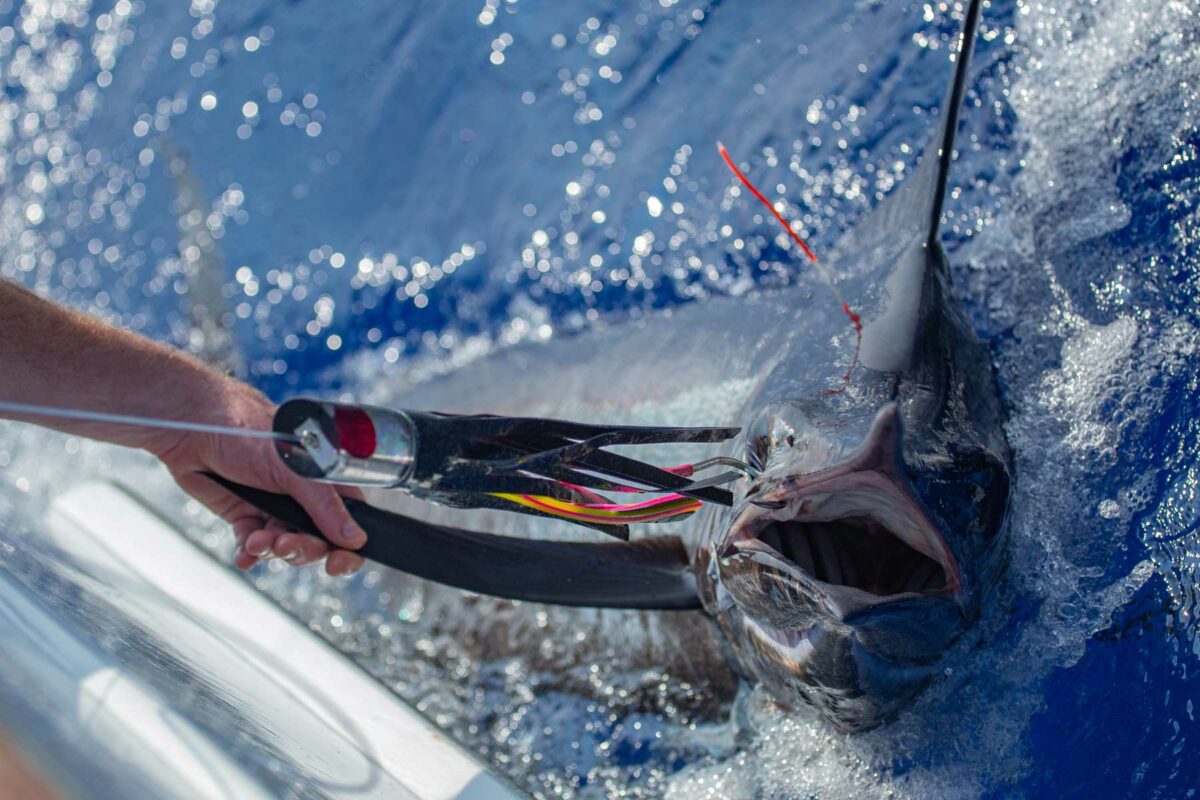By Captain Deane Lambros
This discussion will feature the eight basic elements of bigeye fishing and ultimately how you apply them toward success. You can do all the reading and preparation in the world, but nothing replaces real life experience — a fact that applies to almost anything in life. While you read this article, keep in mind the tactics that are being described here. No matter how hard we might try to separate them, they are still charter-fishing-influenced as this is how we fish 99 percent of the time.
The Canyon Runner is, first and foremost, a charter fishing boat and most of our bigeye fishing is done during our charter season. As such, our typical trips are a blend of charter centric tactics with a part-time concentration on bigeye tactics when appropriate. Our charters want consistent action — 10 yellowfin tuna and 30 mahi-mahi are a win for our charter customers. Catching two bigeyes in one pass and hanging out catching sun rays for the rest of the day is not so good for someone that only goes tuna fishing once a year. The tactics discussed in this article are completely bigeye focused as if “lines-in” is just about to be announced over the VHF radio.
1. Ecology/Biology
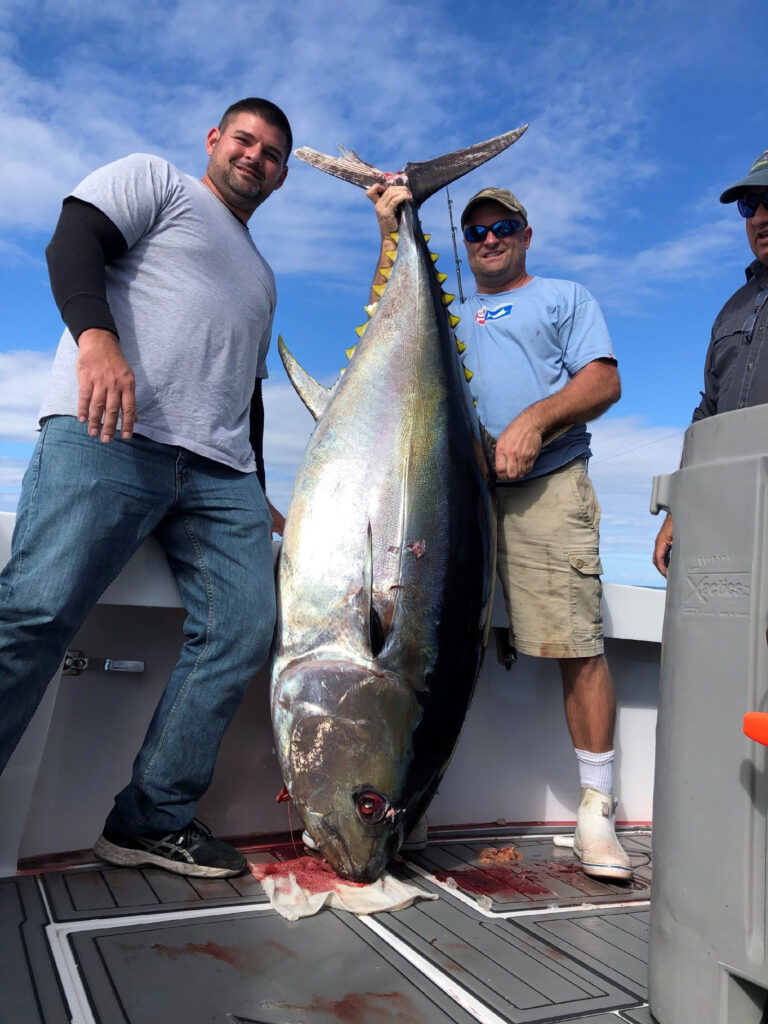
To understand how and where to catch these fish, we have to conceptualize the migration pattern of a bigeye tuna. Bigeye tuna live in three of the five oceans: the Atlantic, Pacific and Indian Ocean. They can reach sizes over 400 pounds and have the ability to dive to depths up to 500 fathoms. Very little is understood of bigeye ecology in the Atlantic Ocean. Most of the information available on bigeye tuna habits have been sourced from fisheries studies in the Pacific and Indian Oceans.
Bigeyes are opportunistic predators much like other tuna species. Their diet consists of mackerel, lancetfish, squid, and other small bait fin fish. Interestingly, so little is known of all species of tuna that only just recently scientists at the University of Maine discovered, by examining bigeye and yellowfin caught on the Canyon Runner, that tuna regularly eat various types of crustaceans.
2. Structure
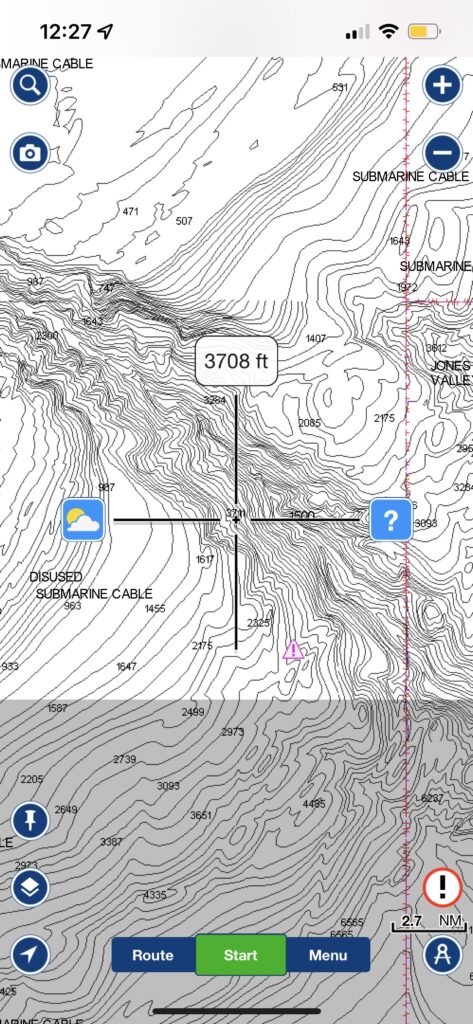
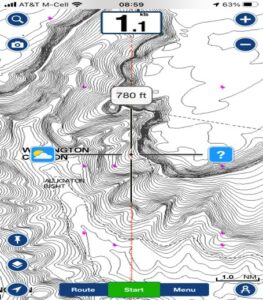
Bigeye tuna are the most structure-orientated tuna that exist in the ocean. Throughout the mid-Atlantic and Northeast canyons, the bigeye tuna can be found anywhere from 100 fathoms to 1,000-plus fathoms. A phrase coined by Capt. Bryan Fromm, f/v, Flying Dutchman, that sums up all of fishing for pelagic species and how we approach almost all the fish we target is as follows: “…they are creatures of habit vulnerable to repeat previous behavior.” When locating bigeyes one of the keys to success is focusing on structure. The corners of canyons and the east notches will hold these fish year after year. Having bathymetric charts in your chart plotter will give you an edge. The detailed information on contour lines and are vital in your hunt. The tighter the contour lines, the steeper the structure.
The further apart the contour lines, the flatter the structure. One of the keys to our success has been our ability to isolate patterns and repeatedly find those patterns during the given season. Steep structures usually hold bait. Bigeye tuna, with help usually from pilot whales (discussed below) will trap bait in the area around this structure and go on a feeding frenzy. The tuna group together in areas so they can feed near the bottom. They can feed as deep as 1,200 fathoms around steep walls to pin the bait up against. Make sure to pay close attention to identify these areas of ridges and plateaus on your chart plotter.
3. Depth

Depth is critical to locating the bigeye tuna. Ninety-nine percent of bigeye tuna will be caught by rod and reel while fishing waters between 100-400 fathoms. Generally, this will lead to less yellowfin tuna bites due to fishing deeper than where yellowfin usually congregate. In general, 150-350 fathoms is the sweet spot for bigeyes, while we rarely catch yellowfin deeper than 200 fathoms. If I had to pick one depth, 250 fathoms is my preferred depth while on the bigeye tuna lap. Only about one percent of bigeyes will be caught inshore of 100 fathoms, and those are rare occasions. Most yellowfin tuna are caught while fishing 100 fathoms or less.
The Deep Scattering Layer (DSL)
Now, once you’ve located one of these ideal structures it’s important to know that bigeye have a unique ability to dive deep feeding on the Deep Scattering Layer (DSL). This is a horizontal zone of living organisms, occurring below the surface in many ocean areas, so called because the layer scatters or reflects sound waves, causing echoes in depth sounders. The deep-scattering layer was later observed to rise toward the surface in the evening and to sink again at dawn, thus leading to a theory that it was composed of living organisms. Net tows through the layer and direct observation from submersibles confirmed the theory.
It’s even more important to know the general preference of bigeye tuna is to feed during the evening or dark hours between the surface and 300 feet. During the daylight hours they feed from 200 feet to 1800 feet. It’s tough trolling for fish when they are down 1800 feet. The most productive bigeye hours are the couple hours prior to and after dusk and dawn. Interestingly, over the years many of our catches are in the same areas where swordfish are caught.
4. Water
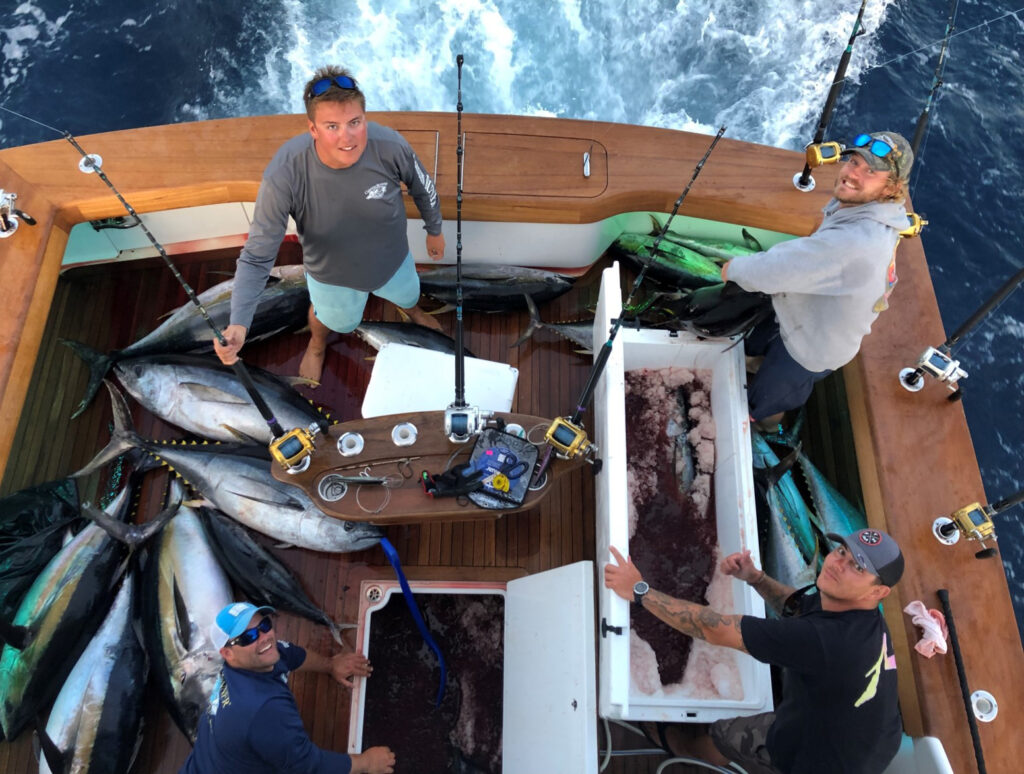
The “right” water is crucial to finding bigeye tuna, especially early in the season. As the season begins, packs of bigeye will migrate into the canyons with the appearance of the first blue water. This water usually is the result of a warm core Gulf Stream eddy that broke off days, weeks or even months prior and now worked its way over the ideal structure discussed above.
Fact is, the cleaner blue water is key to a successful early season bigeye. Fishing the green/blue water changes and sharp temperature breaks will corral the fish in masses on the changes. The fish become easier to target as these areas are limited with so much cold green water still around from the winter and early spring months. When fishing conditions are like this, the number of bites can be incredible. As the season progresses, the water warms up virtually everywhere to a similar temperature and the fish will eventually move out and hold over structure as seemingly the bait is doing just that as well. This is where structure fishing comes into play and the water becomes secondary. Bigeyes are commonly caught in water temperatures from 60-82 degrees with the mid-sixties to mid-seventies being the preferred range. Due to the large spectrum between the temperatures, the structure becomes key.
5. Bait
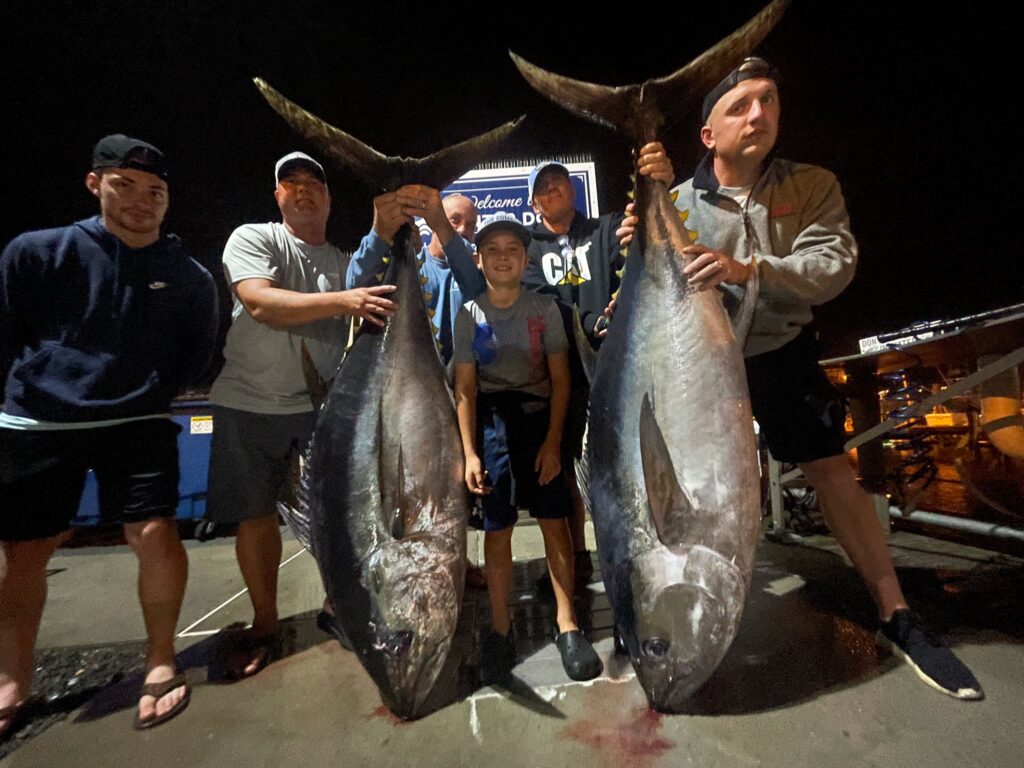
Over the years, as with locating any type of fish, bait plays a critical role in finding bigeye tuna. Usually found on temperature breaks and structure, where the bait is, the bigeyes are. Since these tuna are so unique in their ability to dive deep and thrive in much colder waters, not only do you need to be looking for bait on the surface, you need to look deep. Set your sounder down 1,000-1,500 feet deep and look for the hordes of squid that your tuna will be searching for. Once you find them, don’t leave, the tuna will eventually come up to feed.
All you need is patience to wait it out. As the bait ascends, so do the tunas. The bait will be at an ideal depth nearing sunset to make trolling practical and effective. It’s important to stay on the troll well into dark as the bait doesn’t start its descent until well into the night. Many nights the bigeyes will chew in the dark and some years our best catches are after 10 p.m. or before 4 a.m. “Primetime,” however, is basically one hour before sunset and one hour after first light.
The best time to stay on the troll late hours is on the week of the full moon. The best nighttime trolling is usually three days prior to a full moon and three days after the full moon. During these nights, once the moon is 90 degrees overhead, the bite usually shuts down and you can then take her off troll and get some rest — hopefully with a boatload of bigeyes already decked up.
6. Mammals/Two Tones and Pilot Whales or Black Fish
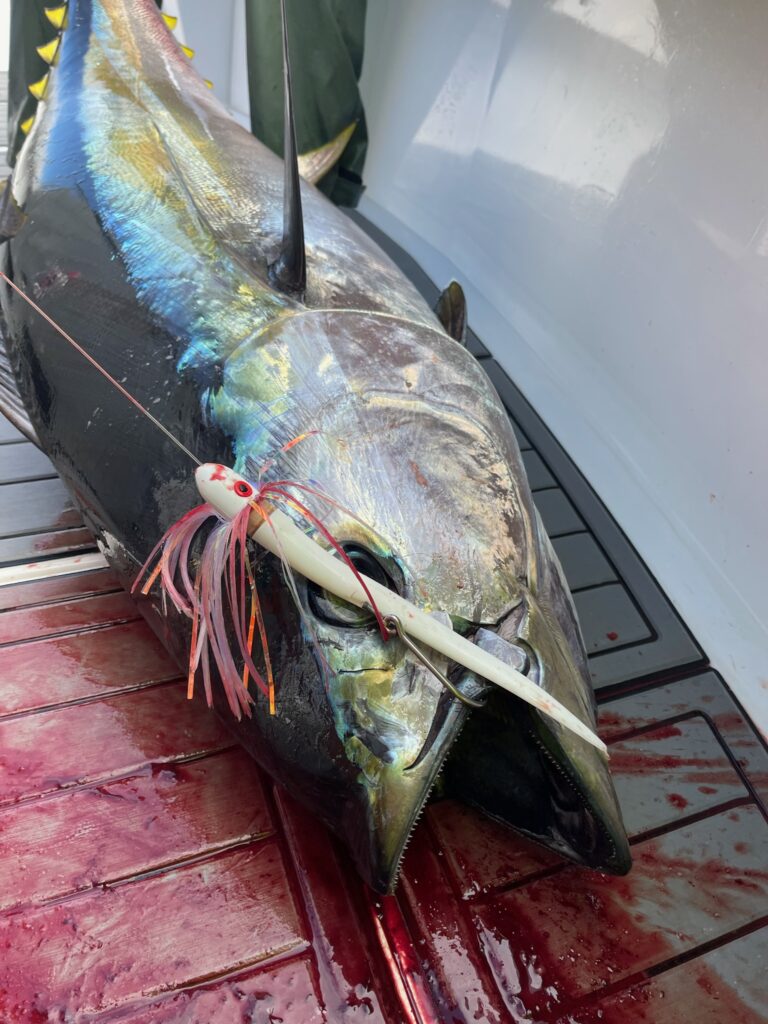
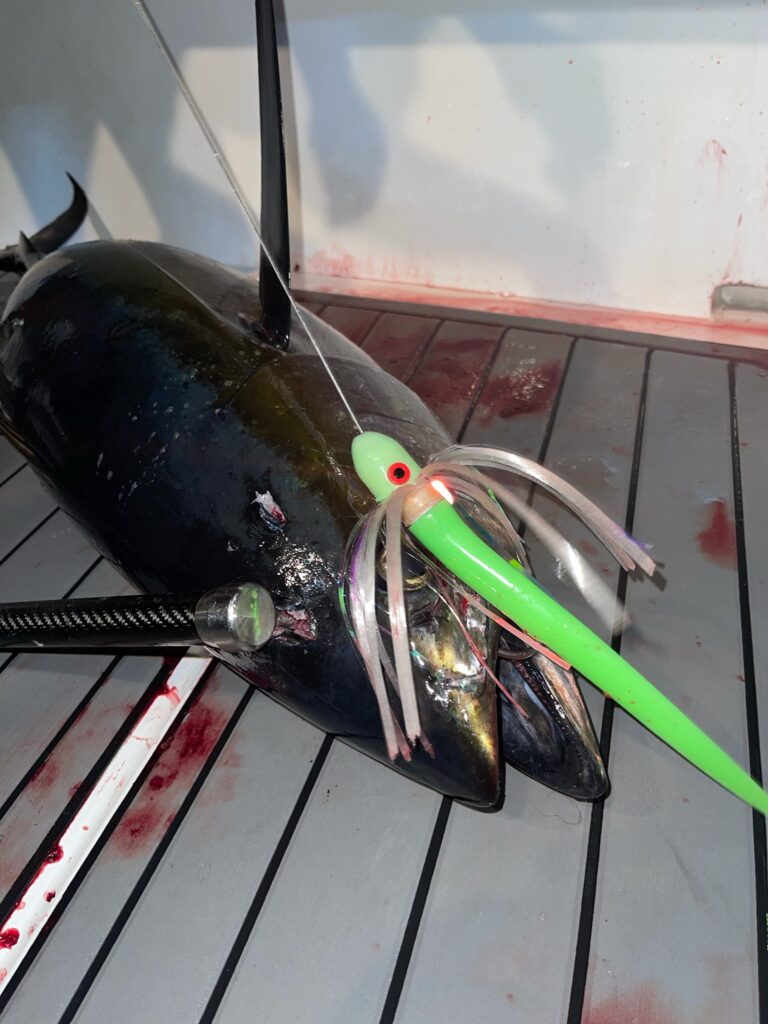
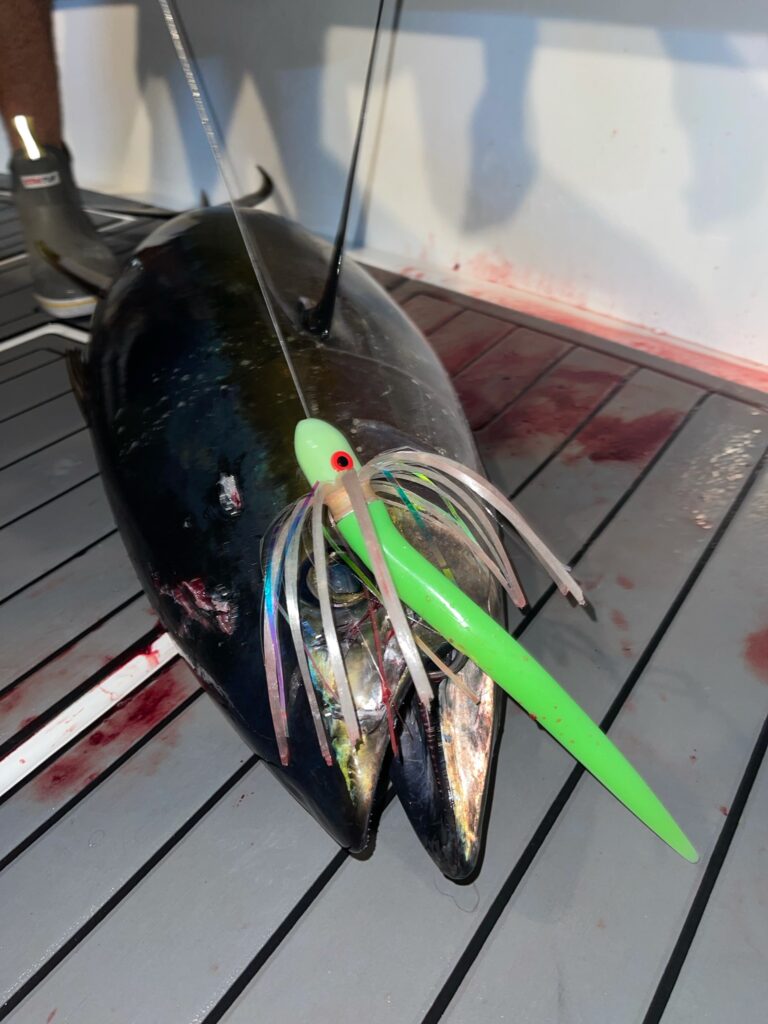
Blackfish, more widely known as pilot whales, are your best friends and bigeyes’ worst enemy because they give away their location. When the condition presents itself, you will see pod after pod of pilot whales hovering over the right structure, you are likely in for one heck of a day. In general, the whales are typically found on the northeast corners of all the canyons or east notches of canyons that have them — like the Hudson, Toms, Linenkhol, Wilmington and Washington. There are some outlier situations where the southwest corners of canyons will hold whales and bigeyes, but these situations are rare (by “corner,” the author means the part of the canyon that opens up to the actual continental shelf and often referred to as the mount — most canyons have an east and west wall and where that wall hits the continental shelf is where the corner is).
Why are pilot whales so key in targeting a bigeye tuna? Basically, the whales are just better at locating the bait — mainly squid — and then balling them up making them easier to feed on. Once you find the whales, ideally you will see hundreds, it’s best to set up camp in this location well into the dark and not move. As the conditions come together, which will likely signal the onset of a bite, the whales will become more condensed. The recorder will start to look fuzzy and the bait will become thicker on the scope.
As the whales push up, the bait this will start to ring the feeding bell and the tunas will come into the area. This is when you will need to be in position trolling amongst the whales to get the bites. Generally, the evening is the best time for bigeyes, but that is not always true as you can get bites all times of the day or night when the pilot whales are on the feed. On average and almost every year, 60-70 percent of our bigeyes come around sunset either just before or just after.
As stressed above, and worth mentioning again, as the sun sets the bait will rise and the fish will rise with it, so you must keep your eye on the sounder. Since you do not know when the fish will come up, troll from the moment you see these conditions. Stay with it till at least one hour after dark minimum and maybe again, even all night.
7. Lure Selection for Bigeye Tuna
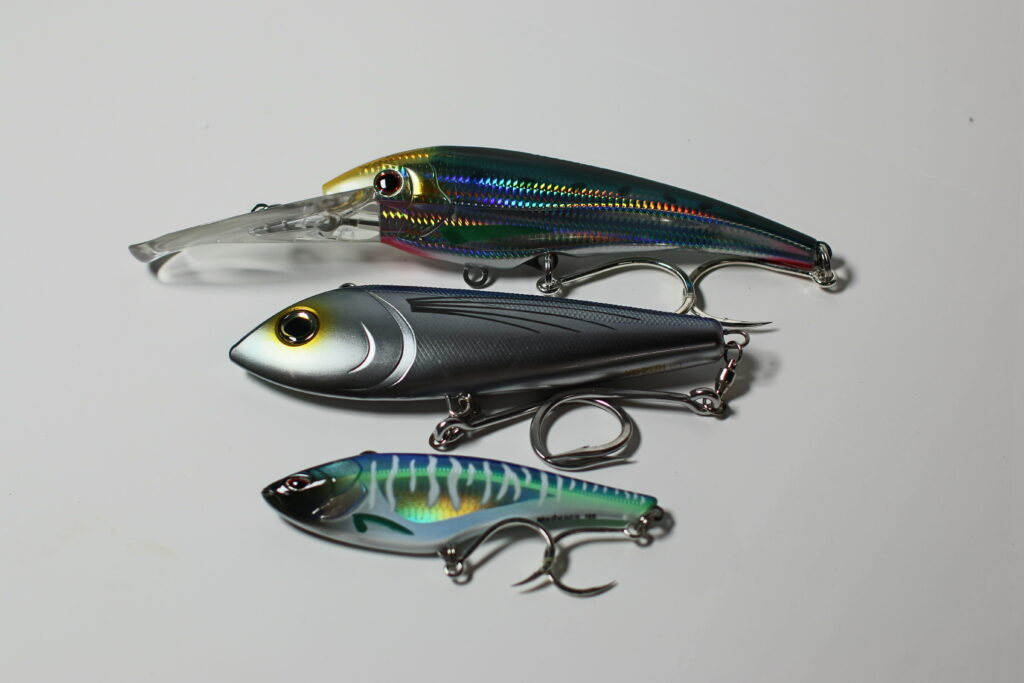
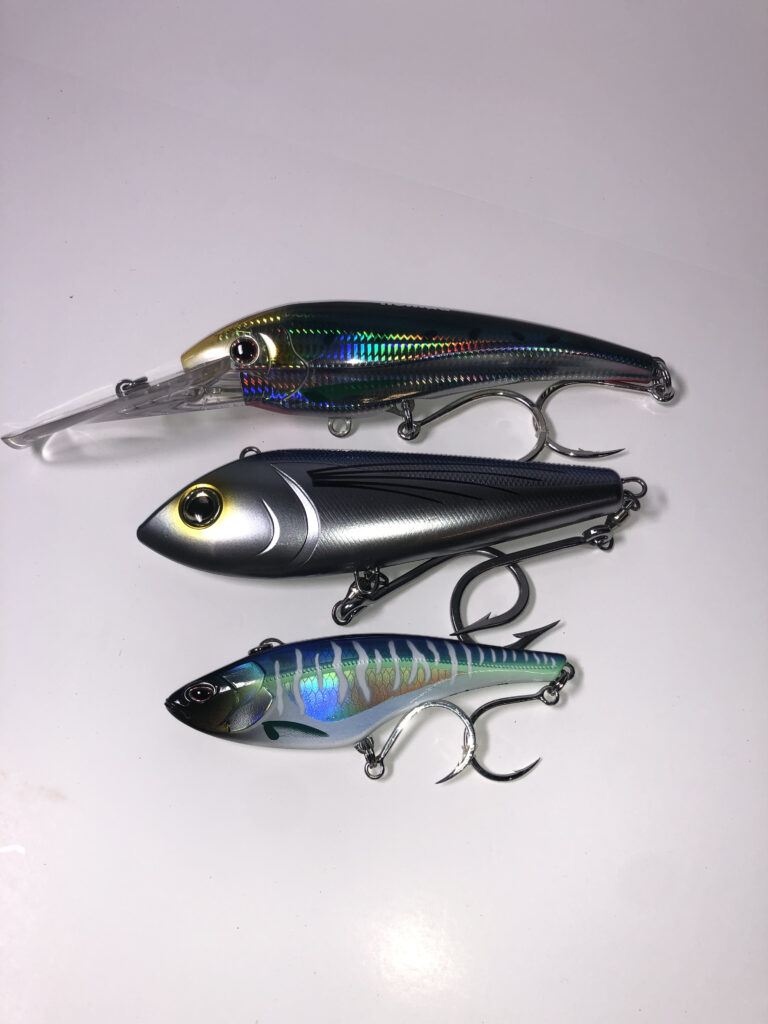
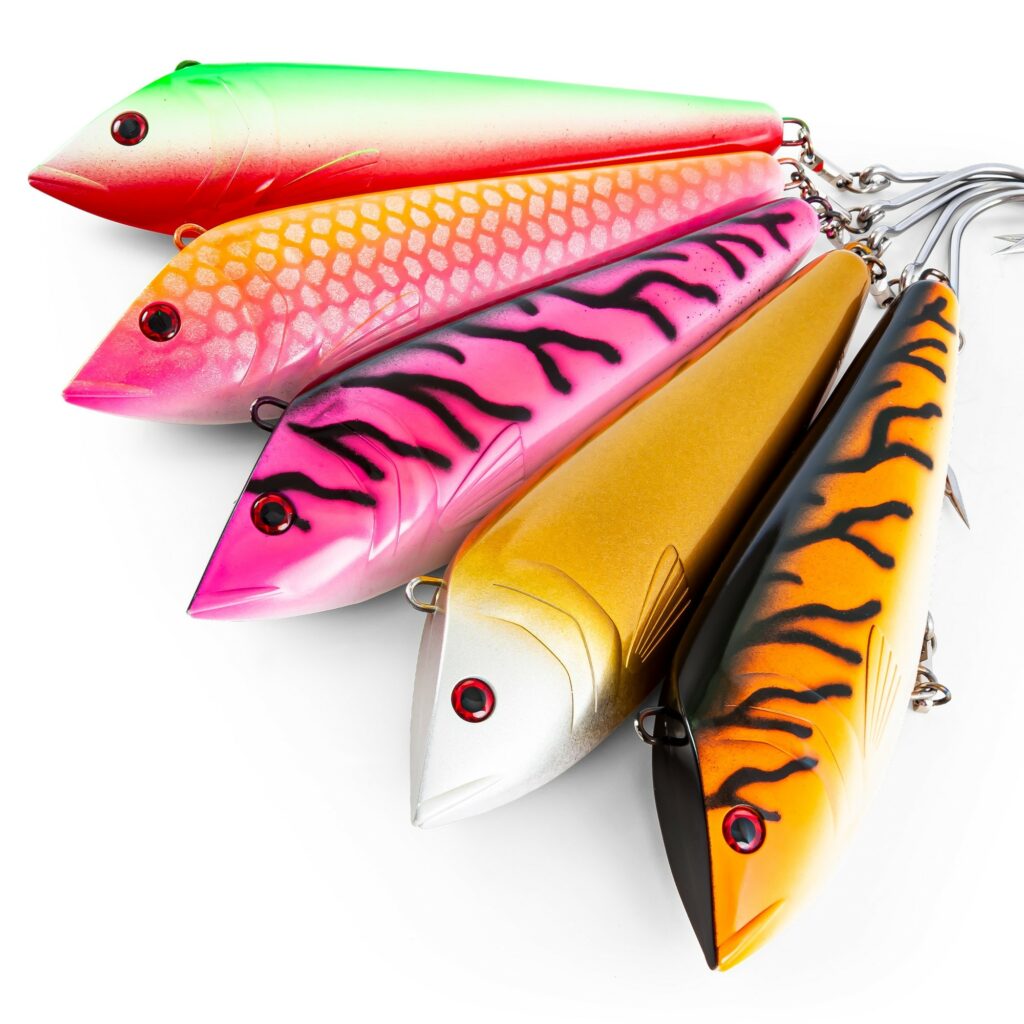
Lure selection is imperative to a successful harvest. It’s important to note that with bigeyes we think lure selection might be more important than any other tuna you might target. We incorporate heavier lures that track straight and don’t jump or dart out of the water — most importantly they won’t get pushed out of the water by a bigeye when it explodes on it. Bigeyes usually feed deep, and larger squid are usually found deep, so perhaps that’s why we find that incorporating lures in the 9 to 12 inches of length is ideal.
It should be noted that since we are charter fishing while targeting bigeyes we also continue to fish a normal yellowfin pattern with smaller lures that they have produced as well. In short, squid are the most abundant bait in the canyons and the bait that bigeye feed on the most, we mostly choose lures that imitate them.
Productive lures include: Melton Cherry jets (Melton named one of their colors after Canyon Runner as we caught two tournament winning bigeyes on their green/black medium Melton cherry jet), Canyon Runner Green Machines and Canyon Runner Green Machine Bars, Sea Witches, Islanders, Joe Shute’s, Wolfpack tackle Ahi Heads in all weights, sizes and colors. We are also fishing a combination of Ronz and Wolfpack tails and ballyhoo. I prefer to fish a mix of colors. This way I can spend less time worrying about what lures are behind the boat and more time looking for signs to work.
All lures will work, but in recent years the artificial tails have become the star on the tuna fishing grounds. They also allow fisherman to fish with conventional J-hooks during tournaments. Fishing circle hooks in ballyhoo led to a poor hook up ratio. Switching to tails allowed us to use J-hooks, and our hookup ratio increased substantially. Don’t get me wrong, we still like to use some ballyhoo in the pattern behind the boat but they aren’t our main player.
8. Dredges

The New Normal
Dredge fishing was incorporated into our everyday fishing in 2012. Over a series of incredible bigeye bites, we felt we were getting more bites with the dredges in the water and elected to incorporate them permanently into our bigeye patterns. This is a technique that was borrowed from modern-day billfishing. Think about it, if two boats are trolling over a school of bigeye that are sitting 200 feet down — one boat has two dredges in the water with 150 squid and a 12-rod pattern and the other boat just has 12 rods and nothing else — what boat is going to entice that school of fish to swim up and feed?
Tuna, like any pelagic species, must decide how much effort they want to put in to determine if the risk matches the reward. We like to troll artificial squid dredges in vivid colors. Rainbow, pink, white, purple and green are our go-to colors. Conditions and the particulars of the day will dictate our speed; usually anywhere from 5.5kts to 7.2 kts.
Capt. Phil Dulanie Weighs In
Canyon Runner captain Phil Dulanie used to troll deep divers in the heyday of the canyons back in the 1970s when he was the mate on a local charter boat Ole Salty. They produced many bites, but they were referred to as throwaway lures because they were simply one time use and had to be discarded. In the early days of the 2013 canyon season a local Long Island fisherman put together a few great yellowfin catches using these lures. The game changer came when we started leaving these plugs in the water while fishing the pilot whales in the evening and they consistently produced bites. The first night we took notice, the second night we were intrigued, the third night we were all in with two plugs behind the boat. This became a staple in our spread.
Whether it be a Nomad, Braid Marauder, X-Rap or a Bomber CD-30, one thing is for certain, the action of these lures triggers bites. All the mentioned lures are fished with six- to nine-foot leader of 130-pound to 180-pound fluorocarbon for abrasion resistance. This also makes the leader a little less high profile. This leader is crimped directly to the ring on the lure with chafe gear. We have found that the chafe gear allows the lure to run true and fishes better.
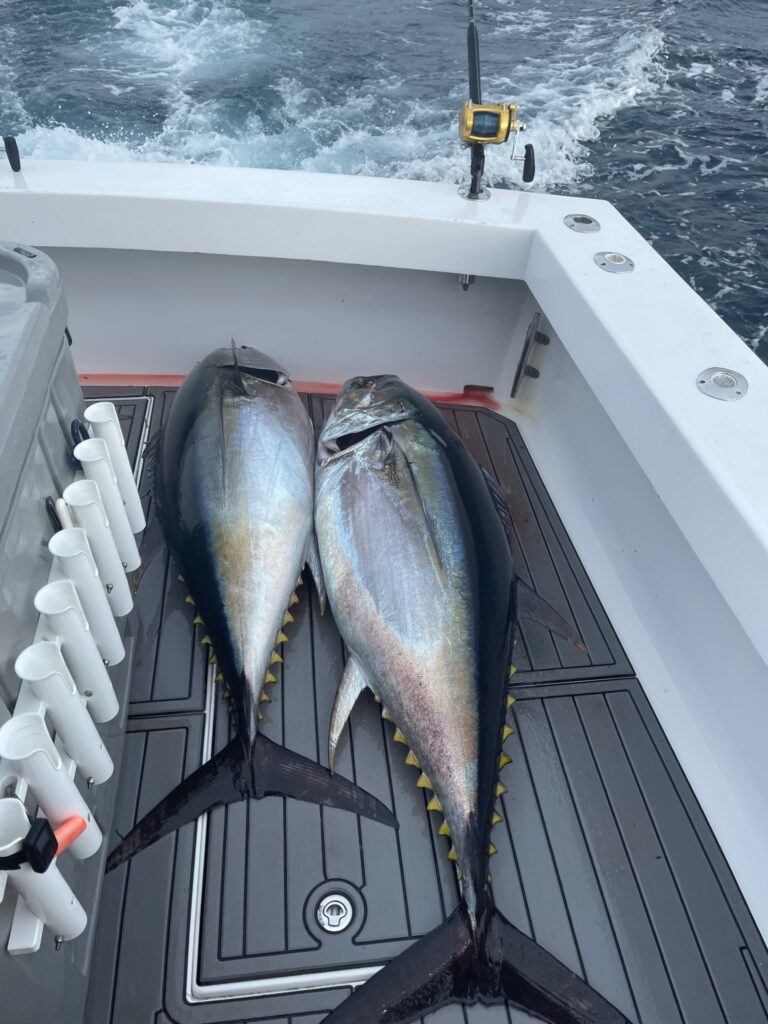
Lures and Hardware
When fishing the X-rap or the bomber it is imperative that the hardware be upgraded. The hardware should be upgraded as follows: An Owner #10/#11 split ring and an Owner ST-66/ST76 hook. These lures were designed for inshore fishing, not offshore tuna fishing, and cannot stand up to heavy drag settings of 20 or more pounds for long durations before blowing apart. After every fish, it’s important to make a thorough inspection of the lure. If cracks are found, then discard.
Over the years, I’ve found that colors don’t seem to matter to the fish as much as they do to the fisherman. I prefer blue/silver, purple/black, green mirror, pink and glow pink. I am asked many times what the secret color is. There isn’t one. Fishing the color spectrum is the key, not any specific color. Therefore, if you are fishing the color spectrum, then all bases are covered. Of course, this means lots of rods out in the pattern. But if you’ve deployed both dark colors and light colors, as the fish come into the spread, they will have a smorgasbord. In the end — and we mentioned a lot of lures above and colors — the most important thing is to be confident in your spread. As with all things in fishing, confidence equates to results.
All-around Sonar — Becoming the Most Effective Fisherman
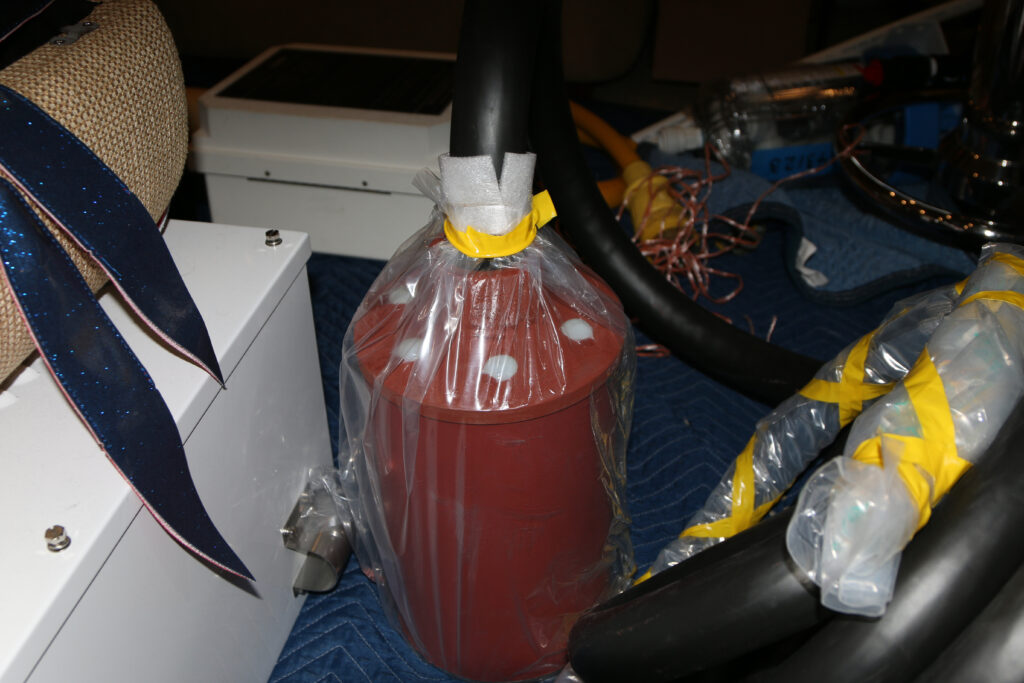
The best analogy of a sonar is what Bloomberg terminals did to commodity trading in the early 1980s: it allowed the traders to see prices at a much faster pace. In short, this sonar is the single greatest edge to make you or your team more efficient. As the captain, you are no longer guessing which way to turn to put the boat over a mark, but rather, you are shown where to turn the boat and put the boat over a mark. The results are staggering, and many of the top teams that understand how to use the technology are in the winning circle repeatedly.
If you are fishing without a sonar, you are putting the odds against you. There are even objections that they should be banned from tournaments due to their effectiveness. In fact, one Montauk tournament did just that in 2021. Could this become a new trend? I tip my hat to the boat owners that have made the investment in their teams and captains by installing a sonar and allowing them to utilize the technology and better their odds. It’s some of the best return on investment you’ll ever put in a boat.
One of the most important pieces of fishing advice I’ve ever received while commercial giant tuna fishing was from Capt. Evan Millas f/v, Head Hunter: “just keep changing it up till you get a bite, dude.” To keep it short, the key to triggering a bite is to give the fish what they are looking for. If you put the time in with a good pattern and look for the signs, you will get the bites. You must be on the fishing grounds, not at the dock, to produce a catch. While targeting bigeye tuna can be some of the most frustrating fishing on record, it can also be some of the most rewarding as well.
Bigeye Know How
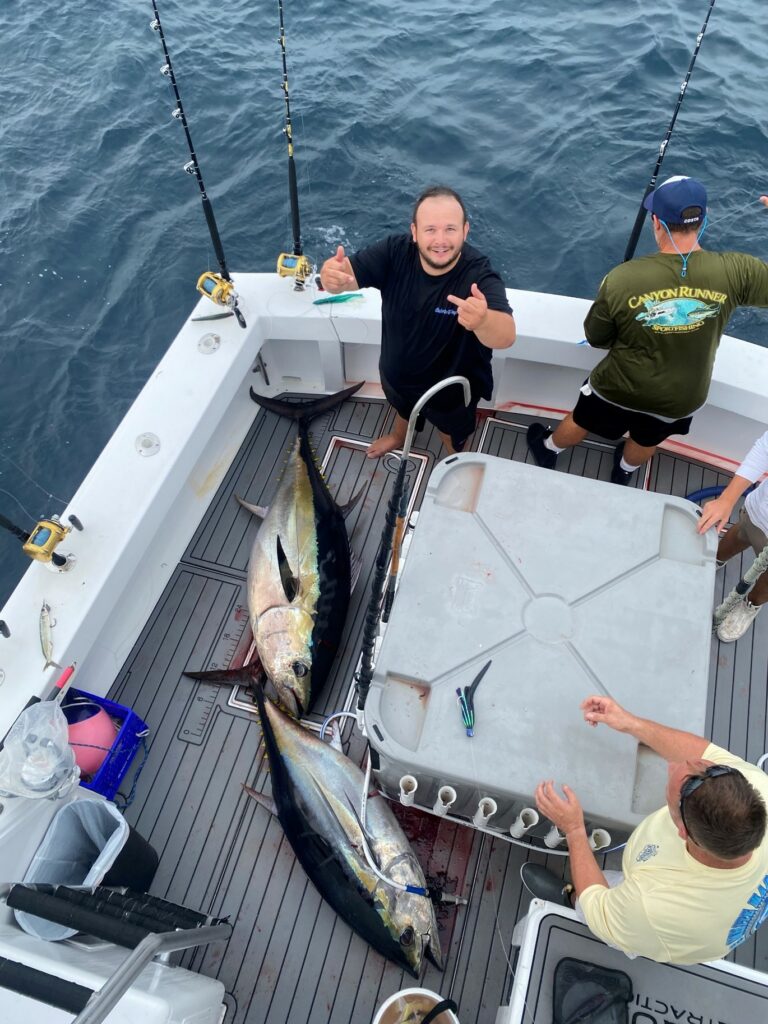
- Ninety-nine percent of bigeye tuna will be caught by rod and reel while fishing waters between 100-400 fathoms. The most productive bigeye hours are the couple hours prior to and after dusk and dawn.
- Bigeyes are commonly caught in water temperatures between 60-82 degrees with the mid-sixties to mid-seventies being the preferred range.
- The best nighttime trolling is usually three days prior to a full moon and three days after the full moon.
- On average, 60 to 70 percent of our bigeyes come around sunset, usually just before or just after.
Don’t Forget to Check Out Our Sportfishing Job Board! Did You Know? It’s the perfect platform for seeking skilled captains and mates. Whether you’re on the hunt for your dream team or looking to join one, your next big adventure begins here. Explore the opportunities now! Click Here
Dive Deeper into the World of Sportfishing
Unlock Exclusive Savings: Enjoy 50% Off Your Subscription!
Are you ready to explore the thrilling world of sportfishing from the comfort of your home? Subscribe now and embark on a journey filled with captivating stories, expert insights, and insider tips. Choose between our digital or print edition and secure an incredible 50% discount on your subscription.
Subscribe today and get ready for an adventure like no other. Click here to subscribe and elevate your sportfishing experience with InTheBite Sportfishing Magazine.










